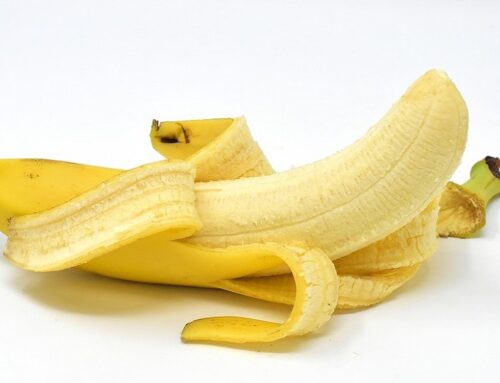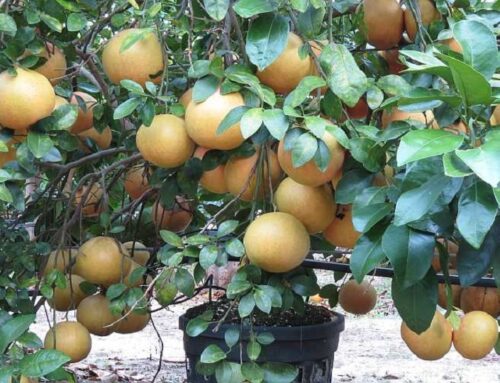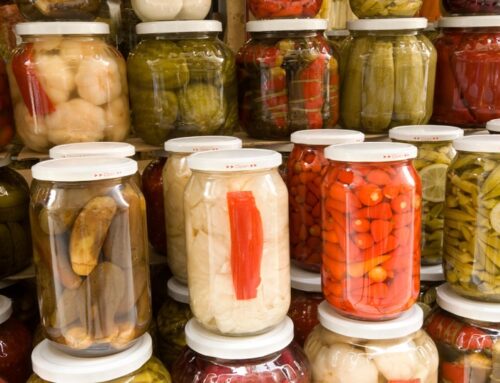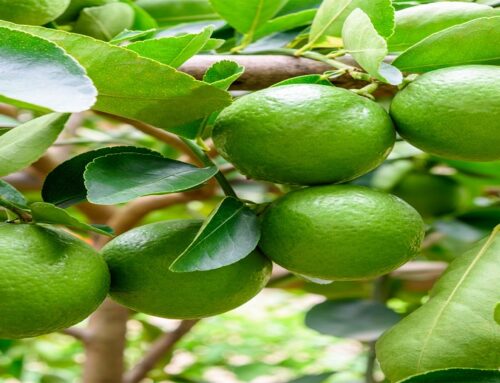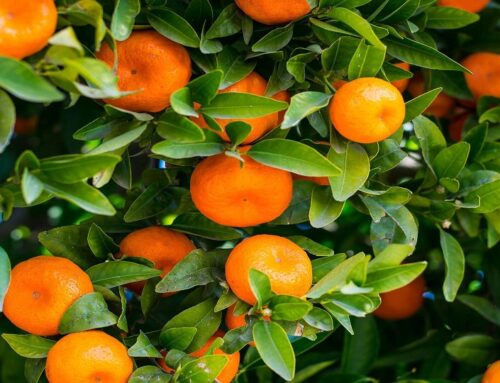A detailed account of various growing practices for pineapple plants is given below:
Climate: Being a tropical crop, Pineapple plants prefer tropical or near tropical climate and a partial shade for its growth.
Altitude: Altitude has an effect on the flavour of fruits. Fruits grown at higher altitudes may be too acidic. Hence low to medium altitudes are preferred for growing pineapples. In Hawaii, a prominent pineapple-growing region, Smooth Cayenne pineapples are cultivated 600 meters from MSL (mean sea level). However pineapples can be grown up to an altitude of 1700 meters without compromising on its fruit quality.
Temperature: Ideal temperature range for the healthy growth of the plants is about 20-45°C. Prolonged cold and frost are not suitable for pineapples as it may retard plant growth, delay maturity and may cause fruits to be highly acidic which is not desirable.
Rainfall: An annual rainfall between 1100 and 1200 mm is the most ideal for growing pineapples. Since the pineapple plant is drought tolerant, it will produce fruits even under a yearly rainfall between 650-3,800 mm, depending on variety, growing area and prevailing climate.
Soil: Well-drained, sandy loam soils rich in organic matter are the most ideal soils for pineapple cultivation. Desired soil pH is between 4.5 and 6.5. Plants cannot stand water-logged soils and hence soil drainage is an important aspect in growing pineapples. Pineapples can be grown in pure sand, red loam, clay loam and gravelly soils but fertility of these soils should be enhanced by the addition of organic manures such as plant waste, leaf manures, farmyard manure, and compost.
Propagation: Vegetative propagation is most popular for growing pineapples. Slips, Suckers and Ratoons as well as Crowns (tops) can be used as planting materials.
Slips: These are the offshoots emerge from the stem around the fruit base and from the leaf axils.
Aerial Suckers: These are the shoots emerge from the plant base at the ground level.
Ratoons or Basal Suckers: These are the shoots emerge from the stolons under the soil surface.
Stumps of the mother plants may also be used as planting materials. However, medium-size slips are considered as the best planting material as it gives highest yield. After that, large crowns and medium-size suckers are preferred. For early fruiting, medium and large suckers may be used.
Field Preparation: Pineapple may be planted in plain fields as well as on slopes. Field is prepared at the onset of monsoon. Field is tilled, and organic matter/humus is added to the top soil; alternatively green manuring may be done to increase soil fertility. Soil sterilization is done by soil solarization or by soil fumigation; this ensures prevention of soil-borne plant pests and diseases. Finally, raised ridges are prepared in the fields for planting purposes.
Planting: Two types of planting systems are followed in pineapple cultivation: Single row system and double row system.
In single row system, distance between two rows is 1.5 to 2 meters while plant to plant distance is about 1meter. In double row system, distance between two rows is 45-60 cm while distance between two plants is 30-45cm. Crowns are planted at a depth of 5 cm while slips and suckers are planted at a depth of 10 cm. Soon after planting, a light watering is given to the plants.
Mulching: Mulching is an important cultural operation in growing pineapples. Mulch reduces evaporation losses of soil moisture and also helps conserve soil moisture. Mulching suppresses weed growth also. Bio-mulch by using dry grass, straw etc may be practiced; alternatively, black polyethylene cover may be used as a mulch.
Manuring and Watering: Application of nitrogenous fertilizers is essential for increasing fruit size and yield of the plants. Researches show that foliar application of urea @13.3 liters per 1,000 plants may be sufficient for getting a good fruit yield. Irrigation or watering is also necessary during summers; otherwise need-based watering is done depending on the prevailing climate, soil conditions etc.
Flowering and Fruiting: Since pineapple is a climacteric fruit, uniform flowering and fruiting of pineapple plants is important for the success of a pineapple plantation. Uniform fruiting facilitates harvesting and marketing processes.
Smoking may be used as a method for uniform flower induction in pineapple plantations as smoke would induce pineapple plants into uniform blooming in 6 weeks; ethylene, a plant hormone is the active ingredient in the smoke. Compressed acetylene gas may also be used for uniform blooming. Foliar spraying of calcium carbide solution (which generates acetylene) may also be tried for uniform blooming.
In some parts of the world, pineapple growers deposit calcium carbide granules directly inside the crown of the plants just before the rains; during the rains, calcium carbide granules are dissolved and acetylene gas is produced which induces uniform flowering.
Plant hormones such as a-naphthaleneacetic acid (ANA) or B naphylacetic acid (BNA) and B-hydroxyethyl hydrazine (BOH) are also capable of inducing flowering in pineapple plants. 6 months old plants are treated with ethylene and other plant hormones for inducing uniform flowering; as a general rule, the plants should have reached the 30 leaf stage when hormonal treatment is done.
Insect-Pests of Pineapples: A detailed description of various inscet-pests that attack pineapple plants is given below:
Nematodes: These worms cause stunting in plants and can be controlled by soil fumigation and crop rotation.
Mealy bugs: This insect causes leaf wilt; biological control by using natural predators such as the parasitic wasp, Hambletonia pseudococciaa is recommended.
Pineapple mites/Red spiders: It causes heavy infestation in young slips; biological control by using natural predators is recommended.
Sap beetles: These beetles attack plants with gummosis disease and can be controlled by proper field sanitation and by growing varieties resistant to gummosis disease.
Cutworms: It causes holes at the base of young fruits and can be controlled by using poison baits.
Diseases of Pineapples: A detailed account of various diseases found in pineapple plants is given below:
Top Rot/Crown Rot and Root Rot: These diseases are caused by soil-borne fungi Phytophthora spp. which is prevalent in wet soils. This disease can be controlled by soil sterilization before planting or by drenching the soil with a recommended fungicide.
Yellow Spot Virus: It is a viral disease spread by thrips. Therefore controlling thrips may control this disease up to some extent.
Crookneck: It is caused by zinc deficiency and is common in mature pineapple plants. Major symptom is curling and twisting of heart leaves. Foliar application of 1% solution of zinc sulfate may control this plant disorder up to a great extent.
Sunburn or sunscald: This is common during summers when fruits are exposed to direct, scorching sun. The affected fruits begin to rot and become infested with insect-pests. The best solution to control this plant disorder is to cover the fruit with brown paper bags during summers and also the removal and disposal of affected fruits to prevent the spread of further infestation.
Heart-rot: It is one of the most serious pineapple diseases and is caused by Phytophthora spp. of fungi. This disease is prevalent in wet climate. The best control measure is to plant disease-resistant varieties.
Harvest Maturity: Major harvest indices of pineapple plants are given below:
Size: Fruit becomes large and begins to ripe when harvesting stage approaches.
Colour Change: Development of external yellow colour is another indication of maturity; fruits may be harvested when the base of the fruit starts yellowing.
Sugar Content: Conversion of starch into sugars is accelerated when fruit is ripe.
Flavour and Aroma: Fruit becomes highly flavourful and aromatic when it is ripe.
Harvesting and Yield: Uniform maturity of fruits facilitates harvesting process and therefore pineapple growers use a plant growth regulator called Ethephon/Ethrel to spray on the fruits about one week before harvest. Ethephon or ethrel produces ethylene gas, which turns the fruit golden yellow. Harvesting is normally done by cutting or breaking off the fruit stalk about 3 cm below its base.
Yield: 15,000 fruits/ha or 50 tons/ha is considered as a good yield in a well-managed pineapple plantation.
Note: 1 hectare/ha is 10,000 sq.m and 1 ton is 1000 kg.
Storage and Transport: Pineapples are highly perishable fruits and at room temperature they can be stored for 2-3 days only and in refrigerators, pineapples may be stored up to one week.
Cold storage at 5°C and lower causes chilling injury; however, cold storage at 7-8°C and above at 80-90% relative humidity and adequate air circulation is the most ideal. Normal ripening progresses under these storage conditions and pineapples can be stored up to 4-6 weeks. Storage life may be prolonged by dipping pineapples in a wax emulsion and drying them. Irradiation of fruits may extend the shelf life of half- ripe pineapples by about one week.
Check out our publishing services here…
We publish top quality videos on various ‘Food & Agriculture’ topics. You may subscribe our video channel here…


